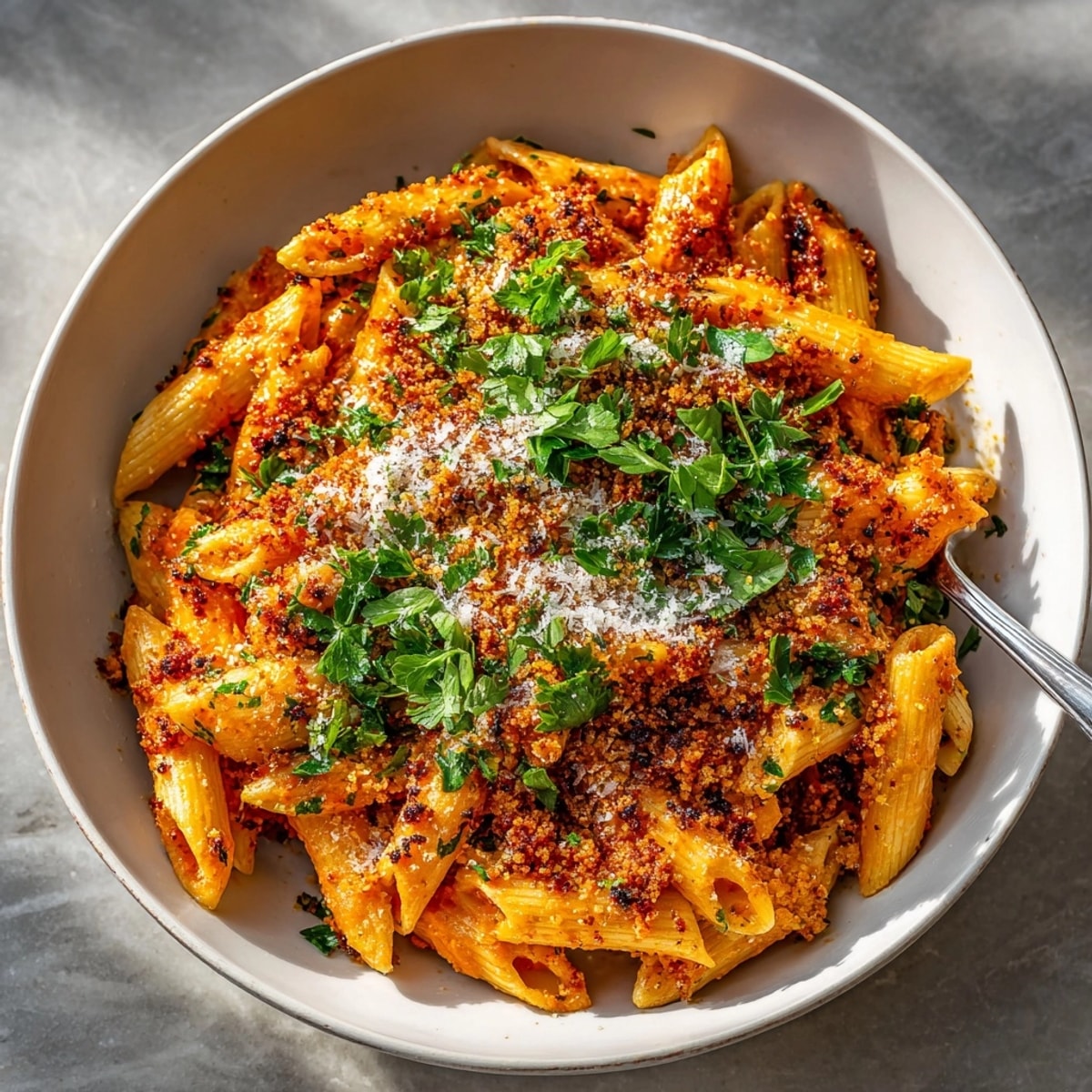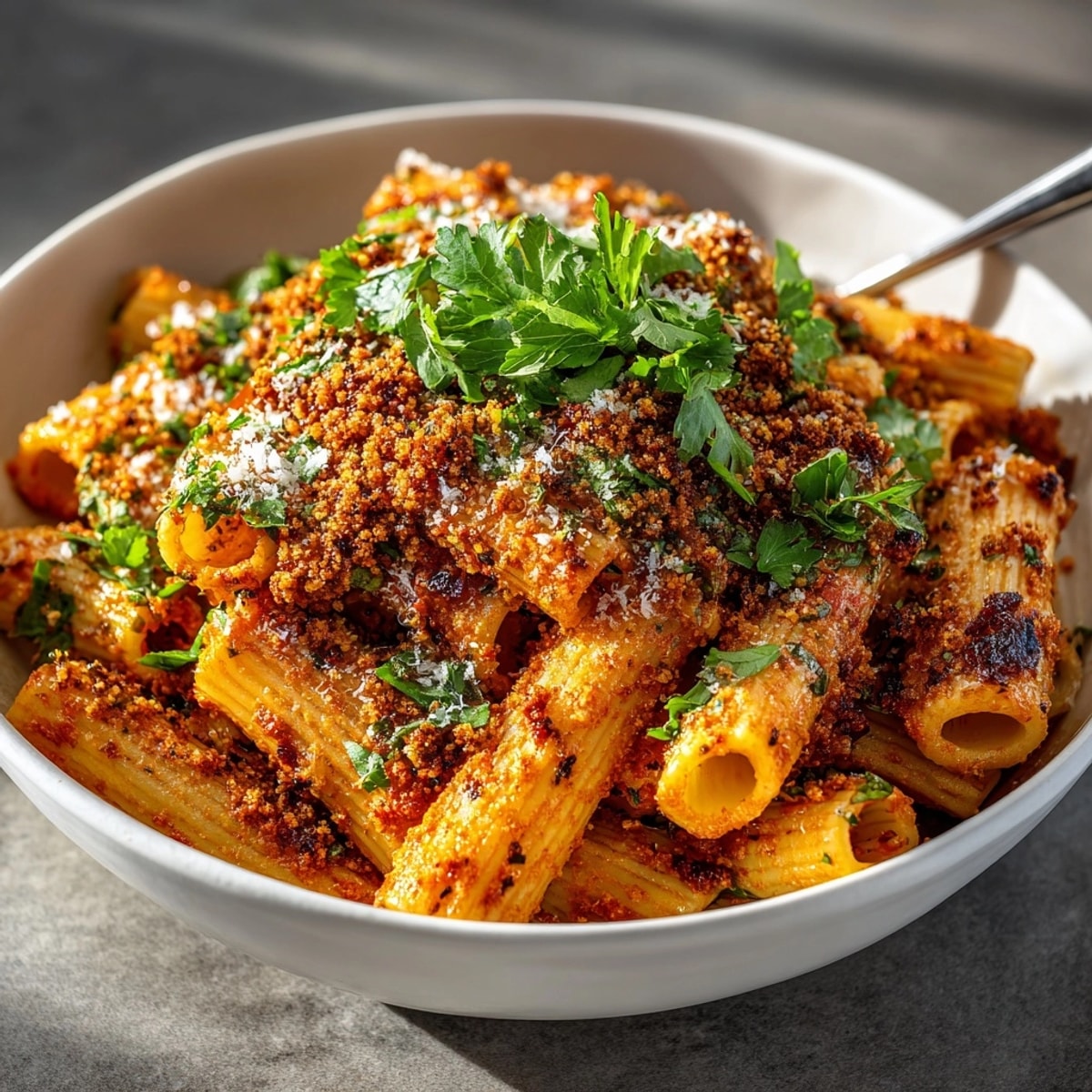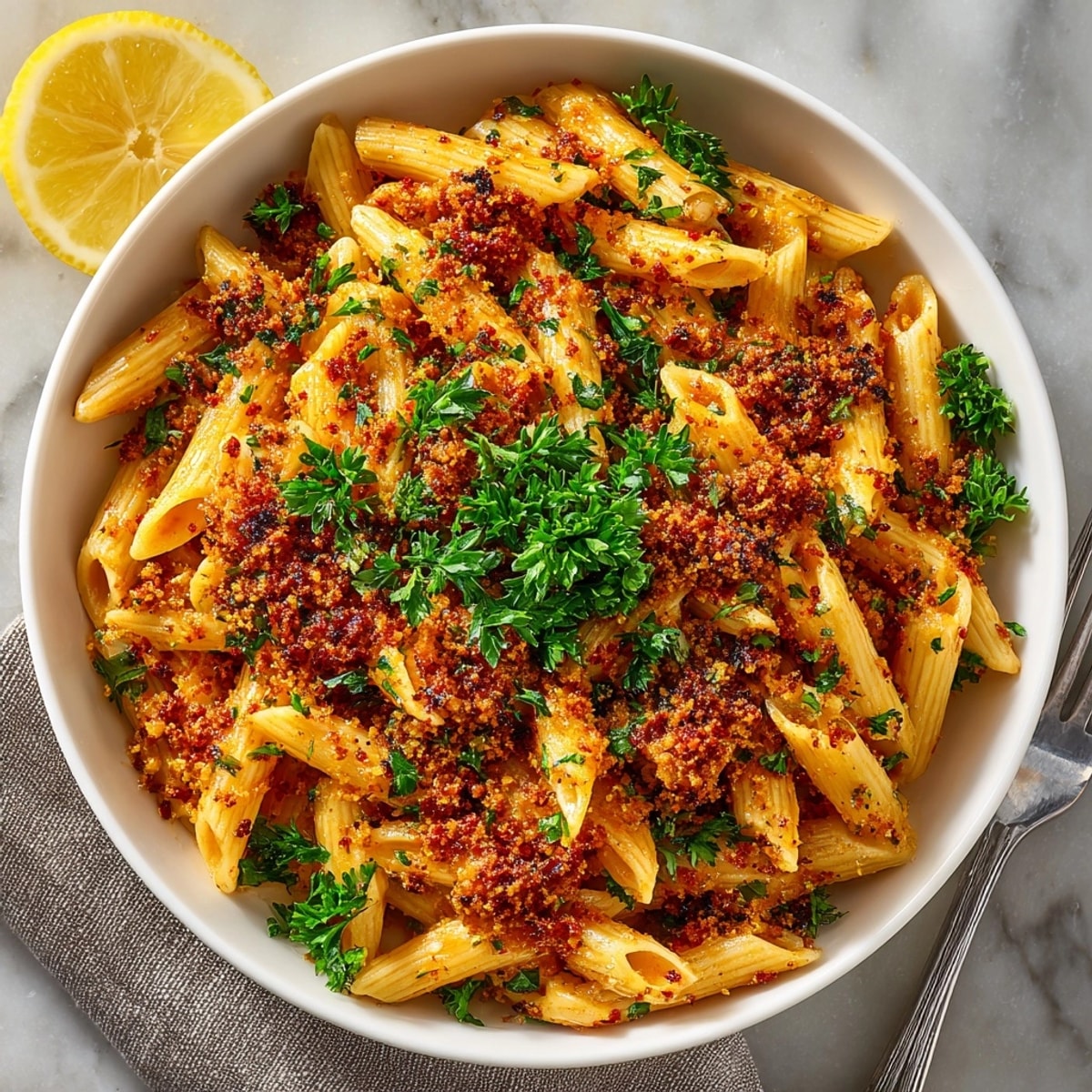 Save
Save This vibrant Ethiopian Berbere Pasta transforms traditional Italian comfort food with the bold, aromatic spices of East Africa. The rich berbere-infused tomato sauce clings perfectly to the pasta, while the crispy injera bread crumbs add an authentic Ethiopian crunch that makes this fusion dish truly special.
I created this recipe after visiting an Ethiopian restaurant where the complex berbere flavors captivated me. Wanting to introduce these flavors to my pasta-loving family, I developed this fusion dish that has since become our favorite way to experience Ethiopian cuisine at home.
Ingredients
- dried penne or rigatoni: 350g The ridges and tubes catch the sauce beautifully
- olive oil: 2 tbsp Use a good quality oil as it forms the flavor base
- medium red onion finely chopped: 1 Adds sweetness and color to the sauce
- garlic cloves minced: 2 Fresh garlic provides essential aromatic notes
- Ethiopian berbere spice blend: 1 tbsp The star ingredient providing complex heat and warmth
- ground cumin: 1 tsp Enhances the berbere with earthy undertones
- smoked paprika: 1 tsp Adds depth and subtle smokiness
- canned crushed tomatoes: 400g San Marzano tomatoes work best for their sweetness
- tomato paste: 1 tbsp Concentrates the tomato flavor and thickens the sauce
- vegetable broth: 75ml Creates perfect sauce consistency
- injera bread: 2 pieces Look for authentic injera at Ethiopian markets or specialty stores
- Fresh cilantro for garnish: The bright herbal notes balance the rich spices
Instructions
- Prepare the Pasta:
- Cook pasta in generously salted water until perfectly al dente, about 1 minute less than package instructions suggest. The pasta will continue cooking slightly when mixed with the hot sauce. Reserve half a cup of starchy pasta water before draining to help bind the sauce later.
- Build the Flavor Base:
- Heat olive oil in a wide skillet over medium heat until it shimmers. Add finely chopped red onion and cook for 4 to 5 minutes, stirring occasionally until the onion softens and becomes translucent. This slow cooking develops sweetness that balances the spicy berbere.
- Bloom the Spices:
- Add minced garlic, berbere spice blend, cumin, and smoked paprika to the softened onions. Cook for exactly 60 seconds, stirring constantly to prevent burning. This crucial step releases the essential oils in the spices, intensifying their flavors and aromas throughout the dish.
- Develop the Sauce:
- Pour in crushed tomatoes, tomato paste, and vegetable broth. Add sugar if using to balance acidity. Season with salt and pepper, then allow the sauce to simmer uncovered for 10 to 12 minutes, stirring occasionally. The sauce should reduce slightly and develop a rich, cohesive flavor.
- Create Injera Crumbs:
- While the sauce simmers, heat olive oil in a separate nonstick pan over medium heat. Add torn injera pieces and sauté for 3 to 4 minutes, stirring frequently until they become crisp and golden brown. The texture should transform from soft to crunchy. Sprinkle with additional berbere if desired for extra heat.
- Combine and Finish:
- Add the drained pasta directly to the sauce, tossing gently but thoroughly to coat every piece. If the sauce seems too thick, add reserved pasta water a tablespoon at a time until you reach your desired consistency. The starch in the water helps the sauce cling to the pasta.
- Serve with Style:
- Portion the pasta into warmed bowls, then generously top with the crispy injera crumbs. Scatter fresh cilantro or parsley over each serving and provide lemon wedges on the side for a bright accent of acidity that cuts through the richness.
 Pin it
Pin it Berbere spice is truly the soul of this dish. The first time I made this pasta, my kitchen filled with the most intoxicating aroma that transported me straight back to the Ethiopian restaurant that inspired me. My daughter, who typically avoids spicy foods, couldn't resist asking for seconds despite the heat—a testament to berbere's complex, balanced flavor profile.
Understanding Berbere Spice
Berbere is the cornerstone of Ethiopian cuisine, a complex blend that typically includes chili peppers, garlic, ginger, basil, korarima, rue, ajwain, nigella, and fenugreek. The heat level varies depending on the blend, so adjust the quantity to your preference. Many specialty stores carry berbere, but you can also find it online or make your own by toasting and grinding the whole spices for maximum flavor. Freshly made berbere will transform this dish from delicious to extraordinary.
About Injera Bread
Injera is a fermented flatbread with a unique spongy texture and slightly tangy flavor. Traditionally made from teff flour, it serves as both plate and utensil in Ethiopian cuisine. For this recipe, day old injera works best for the breadcrumbs as it's slightly drier. If you can't find injera locally, try international markets or Ethiopian restaurants, which sometimes sell it separately. In a pinch, sourdough breadcrumbs can substitute, though you'll miss the distinctive injera flavor.
Make It A Meal
This pasta stands beautifully on its own, but you can create a complete Ethiopian fusion feast by serving it alongside traditional dishes. Pair it with a simple side of collard greens sautéd with garlic and berbere for an authentic touch. A cooling yogurt sauce with cucumber and mint helps balance the heat of the berbere spice. For a truly Ethiopian experience, serve the meal with tej, a honey wine that complements the spicy flavors perfectly.
Seasonal Adaptations
Summer Version Add diced zucchini and yellow squash to the sauce during the last 5 minutes of simmering. Fall Variation Incorporate roasted butternut squash cubes for sweetness that balances the spice. Winter Comfort Stir in shredded kale during the final minutes for added nutrition and heartiness.
Storage And Reheating
Store leftover pasta and sauce together in an airtight container in the refrigerator for up to 3 days. The flavors actually improve overnight as the spices meld further into the sauce. Keep the injera crumbs separate in a dry container at room temperature to maintain their crispness. When reheating, add a splash of water or broth to the pasta before warming gently over medium-low heat, stirring occasionally. Top with the reserved crumbs just before serving to preserve their texture.
 Pin it
Pin it This dish offers a unique fusion of flavors that is both comforting and exciting. It's a perfect way to explore Ethiopian cuisine through a familiar medium.
Frequently Asked Questions
- → What is berbere spice and how does it taste?
Berbere is a fiery Ethiopian spice blend made with chili peppers, garlic, ginger, and warm spices like fenugreek and coriander. It brings a deep heat and complex, aromatic flavor to sauces and stews.
- → Can I use gluten-free pasta for this dish?
Yes, substitute traditional penne or rigatoni with gluten-free pasta to suit dietary needs. Ensure the pasta is cooked al dente for best results.
- → Why use injera bread crumbs as a topping?
Injera crumbs add a signature Ethiopian sour tang and crisp texture, balancing the spicy sauce while adding a satisfying crunch.
- → What vegetables can be added to this pasta?
You can toss in sautéed mushrooms, spinach, or roasted eggplant during the final steps to enhance the dish with extra flavor and nutrition.
- → Is this dish suitable for vegans?
It can be made vegan by choosing pasta without eggs and checking all ingredient labels. Use plant-based broth for the sauce.
- → How spicy is the final result?
The level of heat depends on the amount of berbere used and your personal preference. Adjust the spice for a milder or bolder flavor.